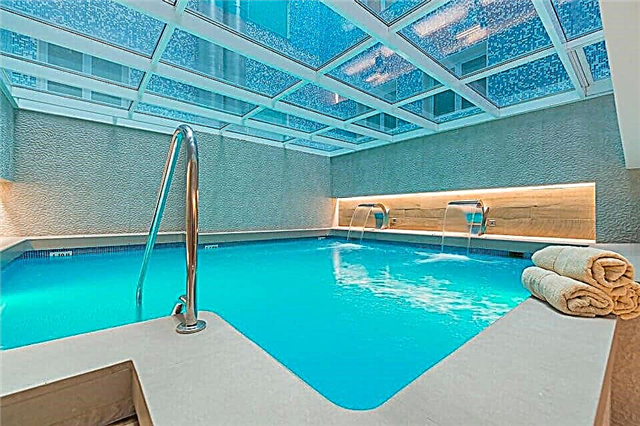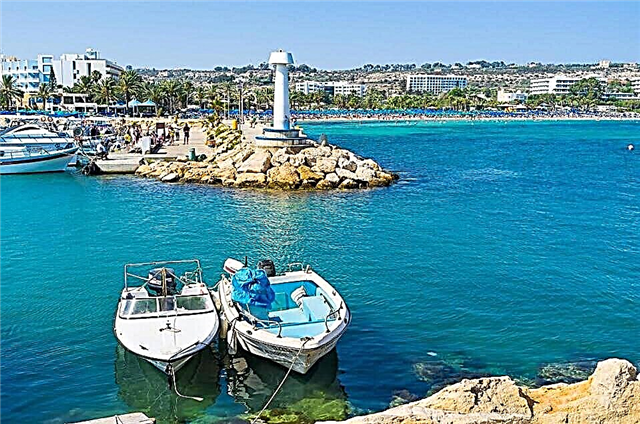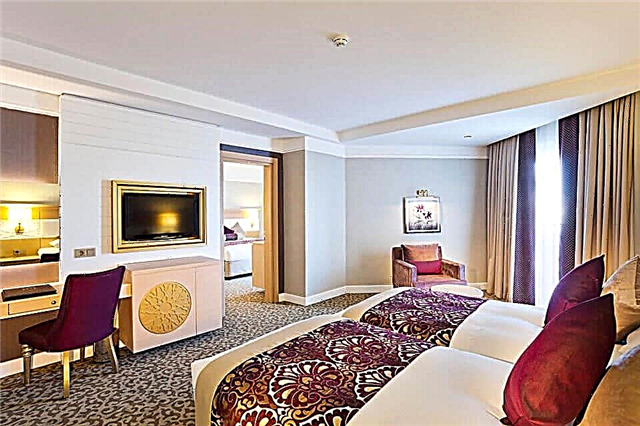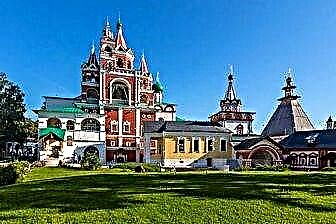Zvenigorod is a small pretty town in the west of the Moscow region. It is one of the oldest settlements in the region, presumably founded by Yuri Dolgoruky in 1152. The main tourist attraction is the architectural complex of the Savvino-Storozhevsky Monastery, on the territory of which ancient temples with priceless frescoes and decorations have been preserved.
In Zvenigorod and the surrounding area there are several interesting estates, which until 1917 belonged to Russian aristocratic families, and are now used as sanatoriums. Some of them have interesting museum exhibitions. It will also be interesting to just walk along the well-groomed streets of the city, enjoy jam and marshmallow in the Museum of Russian Dessert, or sit on a bench next to the monument to A.P. Chekhov.

The best hotels and hotels at affordable prices.
from 500 rubles / day
What to see and where to go in Zvenigorod?
The most interesting and beautiful places for walking. Photos and a short description.
Savvino-Storozhevsky Monastery
The monastery was founded by the monk Savva, a disciple and associate of Sergius of Radonezh in the XIV century. The very first wooden church of the Nativity of the Blessed Virgin Mary was built. The monastery was under the tutelage of the Galician prince Yuri Dmitrievich, thanks to him the monks got possession of vast lands. In subsequent centuries, Russian tsars often came here on pilgrimage. The architectural complex consists of several temples of the 15th - 17th centuries, the royal chambers, the refectory and residential buildings.

Skete of the Monk Sava
The founder of the monastery, the Monk Savva Storozhevsky, preferred to pray and spend most of the time in the cave, which he dug for himself in a ravine not far from the monastery. In the 19th century, a church was erected over the grotto; a little later, a whole ensemble of buildings was built. Over time, an independent monastic community arose on the territory of the Skete with its own temples, courtyard and residential buildings.

Holy spring bath
The bath is located on the territory of the Skete of the Monk Sava. A wooden chapel was built above it, and a small park with flower beds and green lawns was laid out around it. The source is available all year round. Separate hot tubs with changing rooms are equipped for men and women. People come here to plunge into cool waters and collect life-giving moisture, as it is considered curative.

Earthen shafts of the Zvenigorodsky town
Earthen ramparts are the remains of the 12th century defensive fortifications that defended the city from the enemy. They were located outside the walls of the Zvenigorod Kremlin. The ramparts have been preserved almost along their entire length, although over time they have become overgrown with forest and now they rather resemble natural natural hills. Between them, you can walk along dirt paths and enjoy the beauty of nature - the landscape is especially picturesque in summer and early autumn.

Assumption Cathedral on Gorodok
Temple of the XIV-XV centuries, built in the style of early Moscow architecture. Inside the building, there are frescoes that were supposedly created by Daniil Cherny and Andrei Rublev. The building has a cross-domed structure with one central dome topped with a cross. The church bell tower was erected much later - in the 19th century. The cathedral did not work in the period 1930-1946, in the 1990s it became a courtyard of the Savvino-Storozhevsk monastery.

Church of the Nativity
The church was built at the beginning of the 19th century for the needs of the residents of Verkhny Posad, who, during the spring floods of the Moskva River, could not get to services in the churches of Zvenigorod. The fact is that the only wooden bridge was dismantled in the fall and reassembled only after the snow melted completely. During the years of Soviet power, the church did not work; there was a toy factory on its territory. The appearance of the building was significantly changed and adapted to the needs of the factory. Since 1991, the temple again belongs to the Orthodox community.
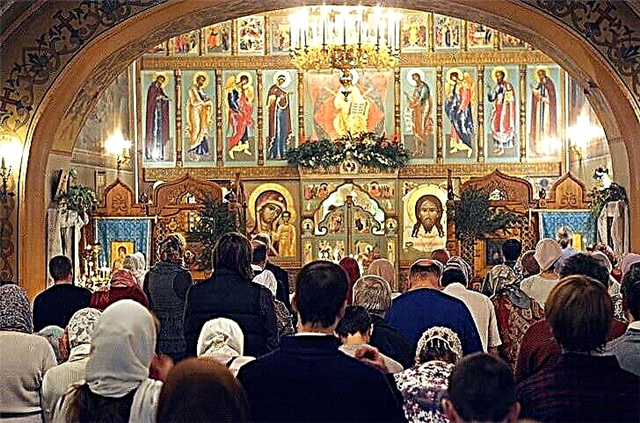
Ascension Cathedral
The Ascension Cathedral is a new church built in 2007 in honor of the 600th anniversary of the death of the Reverend Savva Storozhevsky. The first service here was conducted by Patriarch Alexy II, who consecrated the cathedral. The building is located on a hill where religious institutions were built from time immemorial. In the 17th century, the first Ascension Cathedral was erected here, which at the end of the 18th century was rebuilt from stone (this building was destroyed in 1941 by the decision of the authorities).

Alexander Nevsky Church
An eclectic brick church built in 1898 in memory of Emperor Alexander III. Construction work was carried out on voluntary donations, most of the money was contributed by merchants from Zvenigorod. Services were held until 1938, after which the authorities decided to close the institution. A female gymnasium was located on its territory, which was replaced by the city radio communication center. In the 1990s, the temple was returned to the believers.

Zvenigorod Historical, Architectural and Art Museum
The exposition of the museum is located on the territory of the Savvino-Storozhevskaya monastery, or rather, in the Tsarina's chambers of the 17th century, built for the wife of Tsar Alexei Mikhailovich. Several halls house a permanent historical exhibition. The building itself, with a decorative porch decorated with complex patterned elements, looks very picturesque. It is built of bricks and painted white and red.

Museum of Russian Dessert
The museum exposition is dedicated to the traditional sweet dishes of the Russian table. Here you can taste the famous Tula gingerbread, Belevskaya marshmallow and bagels. The excursion program includes participation in the process of preparing delicacies and tasting. The guide will tell the story of forgotten recipes, reveal culinary secrets, and share interesting legends with the guests. In the museum's buffet, you can buy any sweet you like.

Cultural Center named after Lyubov Orlova
The great actress Lyubov Orlova was born in Zvenigorod. In 2007, a cultural center was opened in her honor, which is a concert hall and a creative space for meetings, evenings, exhibitions, musical performances. Famous actors and musicians perform here, a theater school is open in the summer, where young artists hone their skills.

Memorial of Glory
The monument is located in the central city square. He represents the figure of a soldier during the Great Patriotic War. The memorial is dedicated to the Zvenigorod soldiers, as well as to the soldiers of the 5th Army of the Western Front, who stopped the advance of the German army at the cost of their lives. In front of the sculpture on a pedestal, the Eternal Flame is burning, to the right of which there are memorial plates with the names of the victims.

Monument to Savva Storozhevsky and Yuri Zvenigorodsky
The sculptural composition was created and installed in 2005. It consists of the figures of Prince Yuri and the Monk Sava. The ruler is depicted in battle armor with a helmet in his hands - he personifies strength and power, while the monk sits in a humble pose with a book on his knees and symbolizes wisdom and tranquility. Both historical figures played an important role in the history of Zvenigorod.

Monument to A.P. Chekhov
The statue in honor of the writer was erected in 2010 (or rather, they were put on a bench). At one time, Anton Pavlovich worked as a doctor in Zvenigorod, so the descendants decided to honor his memory in this way. The sculptor's figure of A. Chekhov turned out to be very expressive - the writer sits in a noble pose, dressed in a long overcoat and with a cane in his right hand. Left, he hugs an adorable dog.

House-Museum of M.M. Prishvin in Dunino
The estate is located about 5 km from Zvenigorod in the village of Dunino on the banks of the Moskva River. The house was built in the XIX - early XX century, in 1946 it was bought by M.Prishvin came here every summer. Inside there is a memorial exhibition dedicated to the writer: the study, the library, the veranda and the dining room are furnished with antique furniture, decorated with interior items that were in use in the first half of the 20th century.

Estate "Vvedenskoe"
Before the Revolution of 1917, the estate belonged to Count A.V. Gudovich. The stone manor house was built in 1912 to replace the wooden one. After the owner was shot, an art school-colony was placed in the mansion, in 1920 - the Museum. Trotsky, in 1933 - a sanatorium. Today the estate also belongs to the Zvenigorod sanatorium, so it will not be possible to freely enter its territory.

Vvedenskaya church
The manor church, first mentioned at the end of the 17th century and rebuilt after 1812 with donations from Princess E.N. Lopukhina. The church was rebuilt in 1876 in the classical style. It is a one-domed building connected by a passage to the bell tower. In the 1930s, the temple was closed, and it gradually fell into disrepair. The building was returned to the believers and restored in the 1990s.

Ershovo estate
Family mansion of the Counts Olsufiev. The surviving buildings were erected in the 19th century in the style of the Moscow Empire style. A small brick house with a classic portico stands in the middle of a park with linden alleys, a fountain and a pond with several islets connected by bridges. Since 1928, Ershovo has been used as a sanatorium. Today the holiday home of the same name is located on its territory.

Estate Zakharovo
The estate is part of the State Historical and Literary Museum-Reserve of A.S. Pushkin. Since 1804, the estate belonged to the poet's grandmother M.A. Hannibal. The manor house is a copy of the historical one, since the original building was lost. It was recreated in 1999 for the 200th anniversary of the birth of Alexander Sergeevich. The old park has been preserved in almost its original form - it still remembers the children's games of the future literary genius.

Manor Bolshiye Vyazyomy
An architectural ensemble that took shape during the 16th – 19th centuries. In the 17th century, these lands belonged to Boris Godunov, who started a large-scale construction here. The stone mansion was built in the 18th century. At various times, Paul I, MI Kutuzov, Napoleon, L. Tolstoy, N. Gogol and other famous personalities stayed at the estate. Today the complex is part of the State Historical and Literary Museum-Reserve of A.S. Pushkin.



